1976 to 2016: 40 years of changes in the Top End Pastoral Industry
Host: Katherine Research Station
Written by Arthur Cameron – Principal Pastures Agronomist, DPIF, Darwin.
Setting the scene . . .
The status quo in 1976 was an annual catch and release harvest of mostly uncontrolled shorthorn cattle using horses. Properties were largely undeveloped which contributed to missed animals when mustering. Aircraft and helicopter mustering was at a low level, but was increasing as the potential of using such machines was realised. Cattle prices were recovering from an extremely low level. The only marketing option was generally sale to a local export abattoir. Heavy bulls were preferred for turnoff as cows and heifers were generally not sent off for sale due to high mortality rates in low rainfall years.
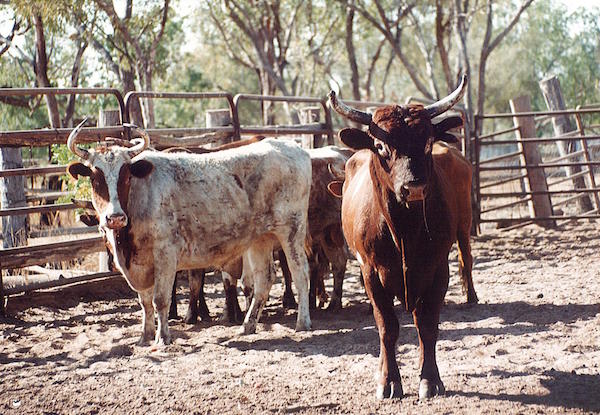 The 1976 pastoral industry was based on shorthorn cattle.
The 1976 pastoral industry was based on shorthorn cattle.
Cattle management was limited. Animal health concerns were high as tuberculosis was prevalent in Top End herds. Infrastructure on properties, including boundary and internal fencing, yards and waters, was minimal as managers used local landscape features to assist in cattle distribution and management. Infrastructure off properties needed improvement as well. Highways were often only one lane, including bridges. This made passing a road train an interesting exercise, particularly during the wet season when road verges were saturated. Most roads were not sealed, so it was not unusual to get bogged on the way to anywhere during the wet season. Rivers and creeks often were impassable during the wet season with boating and flying sometimes the only way to access properties.
Vehicles did not have air-conditioning. This made a trip to the Victoria River District extremely dehydrating and created a thirst which was almost impossible to quench. Care was required while driving on highways to avoid colliding with stray stock.
Adapted pasture cultivar options and areas of improved pastures on properties were limited. Townsville stylo sowings had reached a peak and had declined. Demand for hay was low and production was limited. On a number of properties, grain crops were grown to support local dairy, pig, and poultry production, which was mainly based around Darwin.
The change . . .
Serious change was implemented when producers had to control stock and keep them fenced in for testing during the Bucellosis Tuberculosis Eradication Campaign (BTEC) program. This created a demand for hay and led to more interest in the use of improved pastures to feed cattle when the native pastures could not support the required stocking rates. Changes which followed included the national economic rationalism in the dairy, pig, and poultry industries which led to the demise of local production in these industries, and consequently, the demise of local grain production. Local abattoirs closed over time.
Research was being conducted into cattle and buffalo breeds and breeding, animal management, and animal productivity, as well as native and improved pasture productivity, and grazing management.
Previous to this live export numbers had been low, but the increase in infrastructure as a requirement of BTEC testing allowed an increase in live cattle exports to Malaysia and the Philippines during the 1980s. This was followed by increasing numbers into Indonesia during the 1990s. After the turn of the century live cattle exports to Indonesia continued, and in recent years have reached record numbers.
Currently . . .
The status quo is extremely different from 1976. Producers muster predominantly Brahman or Brahman cross cattle by helicopter assisted by bikes. Cattle are mustered up to three times a year. Bull catchers are a thing of the past. Steers are preferred for turnoff, but many cows and heifers are also turned off each year as breeders or to slaughter. Cattle prices are at or near record high levels.
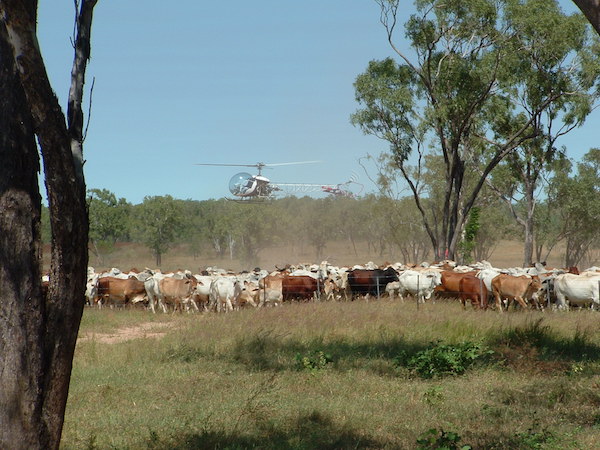 Mustering is now by helicopter.
Mustering is now by helicopter.
There is strong competition for cattle from a range of local and export markets. A new abattoir is providing an option for the sale of older heavier cows and bulls. Live cattle and buffalo export markets now include Vietnam, which is taking a significant number of cattle each year. Other live cattle and buffalo export markets are being investigated.
Highways have been updated to two lanes. Bridges have been upgraded or built across rivers and creeks. Passing lanes are regularly being built to improve traffic flows. Roads where we used to get bogged have been sealed to provide all year round access. The boat is now for fishing, not access and the aeroplane is now for going on holidays. Travel while driving is now in air-conditioned comfort.
On property infrastructure including fencing, yards, and watering points has been vastly improved. Properties are mostly fully fenced. Cattle management has changed from catch and release. Animals are provided with mineral supplements, and are vaccinated against diseases such as botulism. Calves are weaned and cows are segregated into managed mating groups.
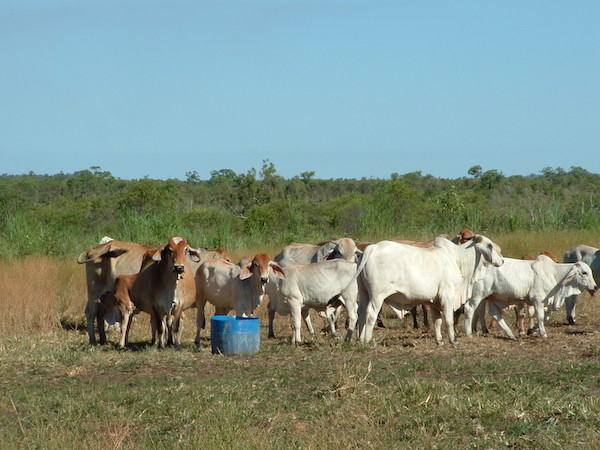 Supplementing Brahman cattle.
Supplementing Brahman cattle.
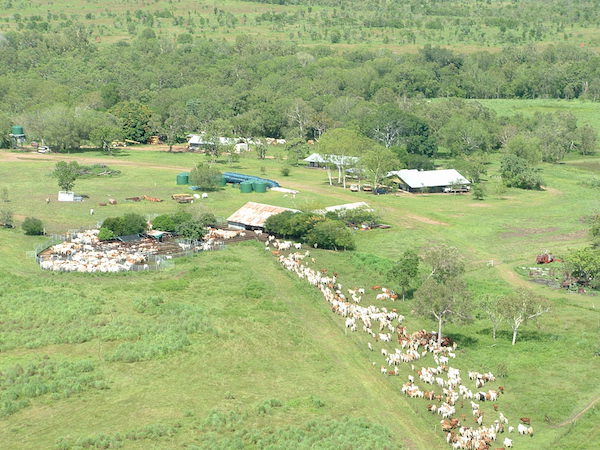 Station infrastructure has improved.
Station infrastructure has improved.
There are adapted pasture cultivars available for most uses. Many properties now have significant areas of improved pastures. A number of properties have diversified into hay and pasture seed production. Jarra which did not exist in 1976 is the main hay grass and Cavalcade, a cultivar bred in the 1970’s, is the main hay legume. Hay production has increased to over 80,000 tonnes annually. Most of this hay finds its way into the live cattle and buffalo export chain one way or another. Two local processing plants produce fodder cubes and pellets, mainly for the live cattle export trade.
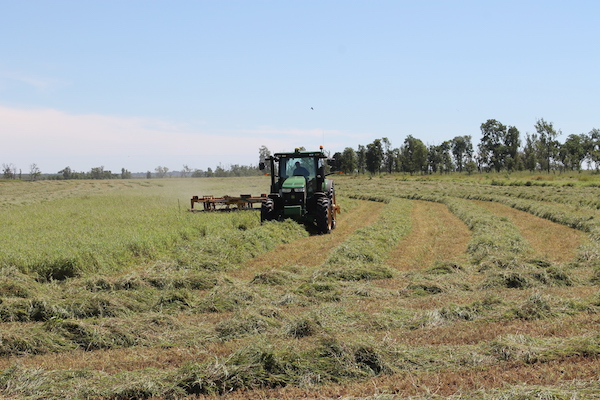 Cutting Jarra hay.
Cutting Jarra hay.
The changes have been definitely for the better.
